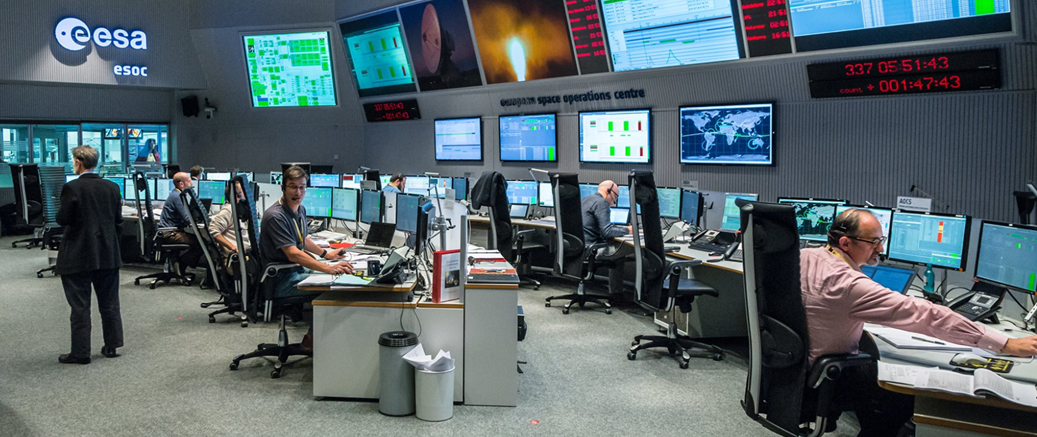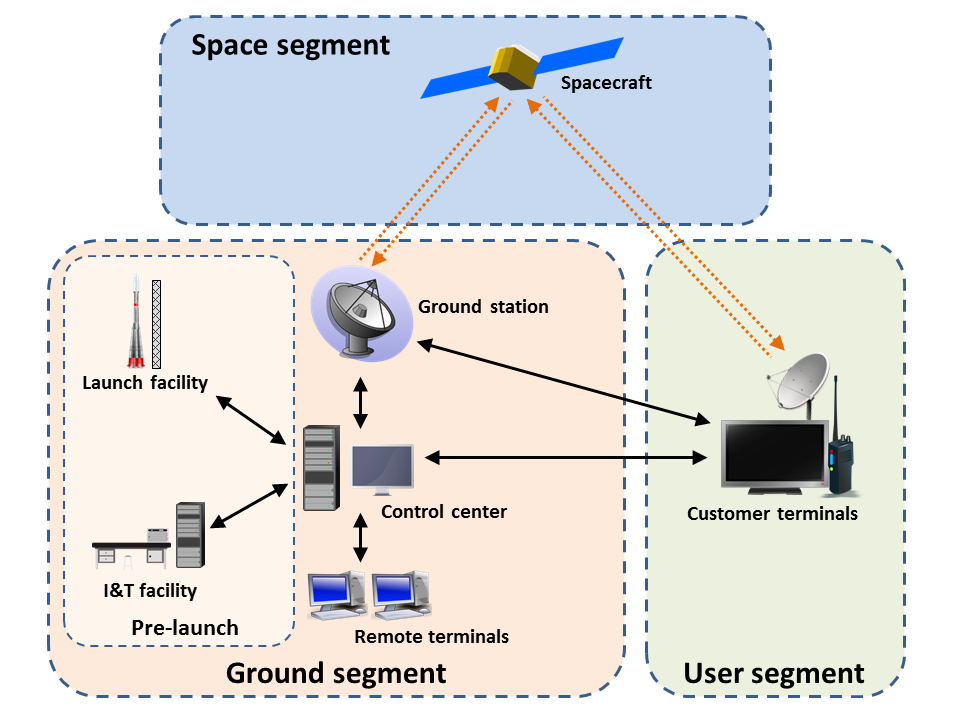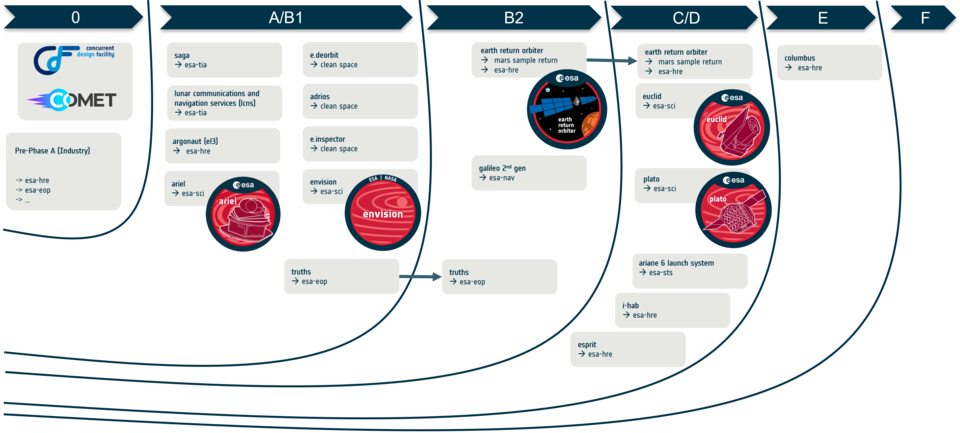The European Space Agency (ESA) is undergoing a progressive transition from traditional paper-based engineering processes to a unified, fully digital platform based on the Model Based Systems Engineering (MBSE) principles.
As part of this transformation, I am currently leading the IDEF project to develop an Integrated, web-based Digital Engineering Framework, with the SysON tool at its core. This activity is funded by the European Space Agency’s General Support Technology Programme (GSTP), which funds impactful early innovation in the European space sector from development to deployment.
The project aims to deliver GSEF v3, the latest version of ESA’s Ground and Space Segment Engineering Framework. GSEF is an open and collaborative web platform that supports a model-based approach to modernize and streamline the engineering of ground segments for space missions. It replaces traditional document-centric methods with integrated digital models.

Credit: ESA/K. Siewert - CC BY-SA 3.0 IGO
What is a Ground Segment?
In a space system, the Ground Segment refers to the Earth-based infrastructure that supports the operation, monitoring, and control of spacecraft. It provides the essential capabilities for communication, data handling, and command and control throughout the mission lifecycle.
A typical Ground Segment includes:
- Ground Stations: antennas and facilities that send commands to spacecraft and receive telemetry and mission data;
- Mission Control Centers: facilities where operators monitor satellite health, status, and mission operations

Image from wikipedia
The need for a digitalization
In many industries, the increasing complexity of systems is pushing organizations to move from paper-based engineering toward digital transformation.
This is especially true at ESA, as highlighted by Director General Josef Aschbacher:
“ESA projects are characterised by heavy engineering efforts from geographically dispersed teams in ESA and industry. Digital continuity throughout the life cycle of projects allows the substantial reduction of cost and efforts and will shorten schedules.”
When it comes to developing Ground Segments, which must control satellites in real time across a network of multiple ground stations, adopting MBSE is key. The expected benefits include:
- Integrated Single Source of Truth, enabling a consistent Digital Thread;
- Enhanced Collaboration and Communication across dispersed teams;
- Efficient Change Management and architecture trade-offs;
- Standardization and Reusability for multi-mission projects.
Several ESA missions have already embraced the MBSE approach, including flagship projects such as Galileo 2nd generation, or Ariane 6 Launch System.
Image from ESA
The GSEF initiative
To address the specific needs of Ground Segment development, ESA initiated the Ground and Space Segment Engineering Framework (GSEF). It is a tailored MBSE platform available on the Space-CODEV Platform under the ESA Community License v2.4. It offers a comprehensive feature set:
- Web-based advanced editing;
- Real-time collaboration (concurrent modeling, reviews, etc.);
- SysML v2 compliance (core model, REST APIs, libraries);
- Seamless integration with other engineering tools;
- Automated document generation;
- History management (versioning, comparison, etc.);
- Project-based security (fine-grained access control);
- Tailored methodology support for the space domain (custom libraries, editors, process guidance).
GSEF v1, delivered in March 2020 through the PLGSE study (Paperless End-to-End Ground Segment Engineering), marked ESA’s first major step toward MBSE adoption for Ground Segments.
In 2023, several follow-up projects contributed to the development of GSEF v2:
- ADGE (Advanced Digital Ground Segment Engineering);
- MBSE-IT (Digital Ground Segment Management through Integrated MBSE and IT provisioning);
- DGSO (Digital Ground Segment Operations for Phases 0/A);
And at the end of 2024, the IDEF project (Integrated Digital Engineering Framework) began the development of GSEF v3.
Conducted by a consortium led by Obeo, including CGI, Samares Engineering, and Spacecube, this project will bring GSEF to a higher level of industrialization, focusing on standards support, collaboration, history management, and security.
The integration of SysON
In this context, SysON is integrated to provide the core support for SysML v2 in a web-based environment.

It ensures:
- Compliance with the SysML v2 language (core concepts for building system models);
- Availability of REST APIs to interface with external tools;
- Support for libraries, enabling model reuse and customization.
Moreover, SysON’s extensibility allows tailoring the platform to ESA’s specific space mission methodology. This customization can occur at several levels:
- Adding custom graphical editors to represent SysML v2 elements with domain-specific colors and shapes;
- Adding new tools to support specific tasks (for example, validation, queries, editing workflows, method guidance).
You can see concrete examples of such customizations in this other article: Introducing Methodology Support for SysMLv2 with SysON.
The phase 1 of the IDEF project recently finished with success, with the delivery of a Minimal Viable Product. The phase 2 that has just started will bring the platform to TRL 7. It will be validated against real representative data and context of use, including ESA missions, science ground segment engineering, operations engineering, and multi-mission reuse concepts.
In the coming months, we will have several opportunities to showcase GSEF v3 in greater detail. The next one will be at the MBSE 2025 conference (Model-Based Space Systems and Software Engineering), which will take place in Lithuania in November 2025. We hope to see you there!

